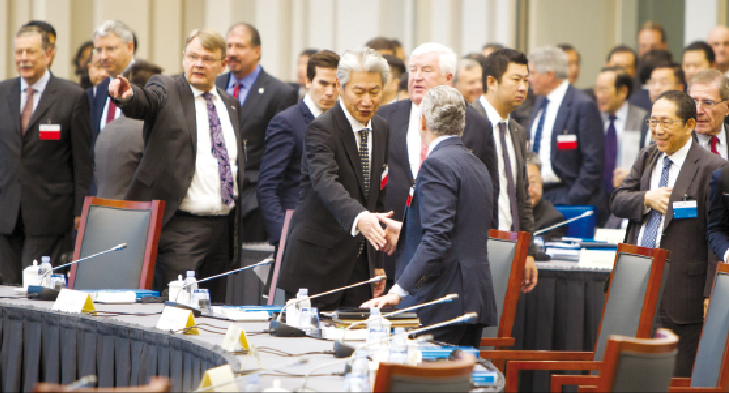Home> News
Shanghai’s push for science and tech innovation gaining pace
Updated: 2015-11-07
( China Daily USA )
 |
|
About 500 delegates including government officials, executives from State-owned and multinational enterprises attend the 27th International Business Leaders' Advisory Council (IBLAC) in Shanghai on Nov 1. Gao erqiang / china daily |
The main focus of the 27th International Business Leaders’ Advisory Council (IBLAC) forum held on Nov 1 in Shanghai was on how the city can, with the support from international businesses, continue to lead China’s push toward scientific and technological innovation.
In attendance at the forum were about 500 delegates, including municipal government officials, executives from major State-owned enterprises, heads of higher learning institutions and senior executives from some of the world’s leading multinational companies.
According to Shanghai Mayor Yang Xiong, the city will aim to speed up its transformation into a global science and tech hub by reducing government bureaucracy as well as introducing more policies to attract talents. He also said that Shanghai has already been formulating policies to pursue developments in various fields, including brain science, artificial intelligence, stem cell and tissue repair.
Apart from its focus on science and tech, officials are also exploring innovative ways in government service provision to provide better support for new technologies, industries and business formats.
“We have just released a set of new reform plans and they are being readied for implementation, while financial innovation will also help to accelerate the government’s reforms,” added Yang.
“Shanghai will also be devising new policies to attract overseas talents whose creative input can help form a cluster of innovation-oriented companies in the near future.”
Shanghai has already been leading the way in molding an innovation-led economy by pioneering scientific and technological innovation in China. Currently, the number of research and design centers by multinational corporations in Shanghai accounts for nearly a quarter of the total number in the country. The proportion of Shanghai’s investment in research and development in its GDP has also risen from 2.8 percent in 2010 to 3.6 percent in 2014, reaching the level of developed countries.
Martin Sorrell, chief executive of media services firm WPP and chairman of this year’s council, expressed his confidence and belief that Shanghai can achieve its goal to become an international innovation center with its comprehensive and all-embracing strategy.
“Our vision for IBLAC 2015 and future IBLAC conferences is to do more than adopt the best practices for Shanghai — we want to innovate and create future best practices in order to make Shanghai a leading city for the rest of the world to follow,” said Sorrell.
Peter Gruss, former president of the Max-Planck-Gesellschaft, a non-governmental science and technology research organization, pointed out that enterprises should be more open-minded about absorbing a variety of talents, as well as be more willing to explore having collaborations with different types of companies. He also added that the companies should train their talents to be more adventurous and not fear challenging authority.
“It is very important for local enterprises, especially small and medium-sized enterprises, to understand and leverage automation and digital technologies to realize the goal of Made in China 2025,” said Ulrich Spiesshofer, CEO of ABB, a global leader in power and automation technologies.
“It’s also essential to strengthen cooperation with multinational corporations to establish a mutually dependent, mutually supporting innovative economic eco-system composed of companies with professional skills.”
In the long run, Shanghai will still need to learn from cities in other countries to maintain its continuous reforms, said the mayor.
“To be more innovative, we will apply the things learnt from other countries to create a more applicable and flexible resource allocation system for larger scale reforms,” said Yang.














